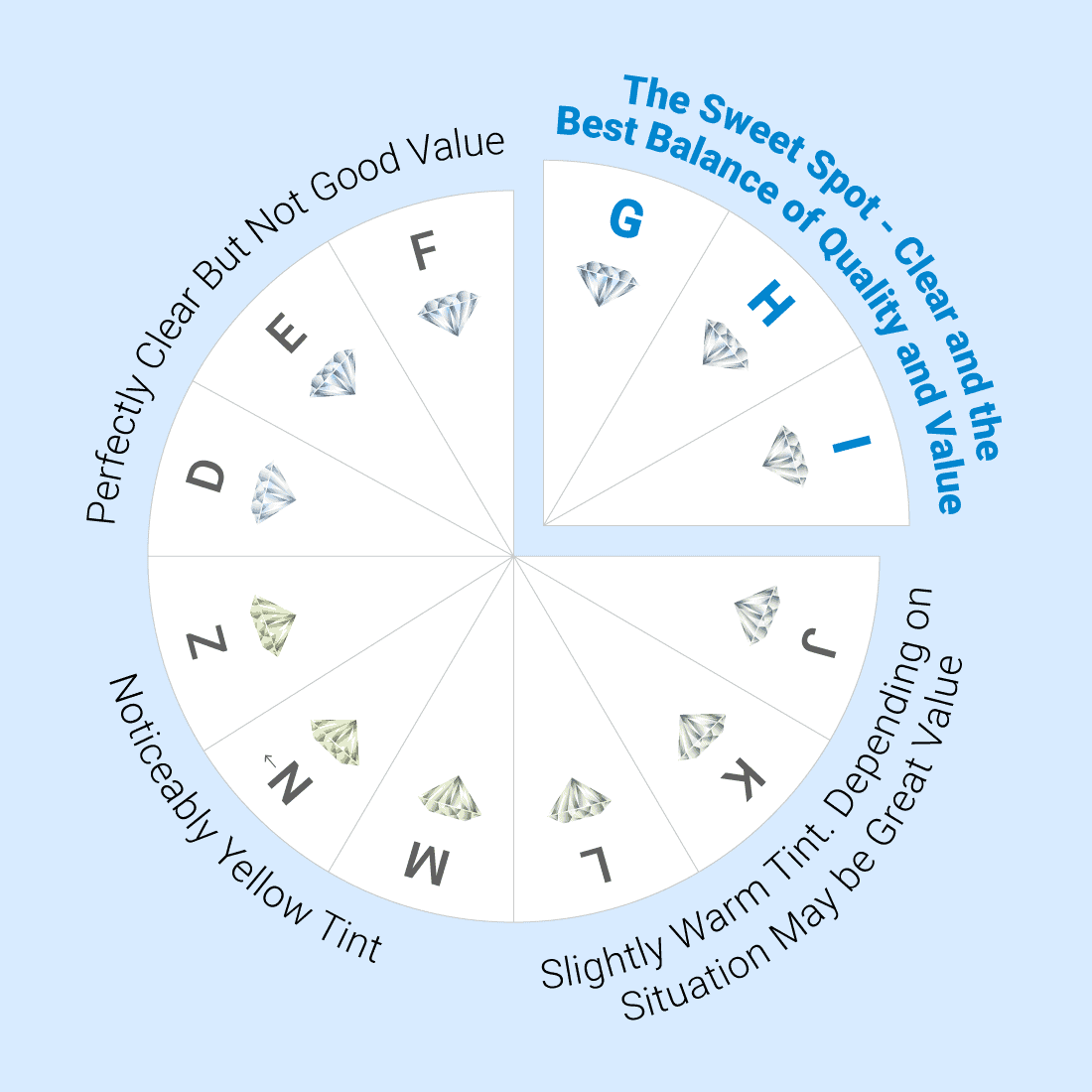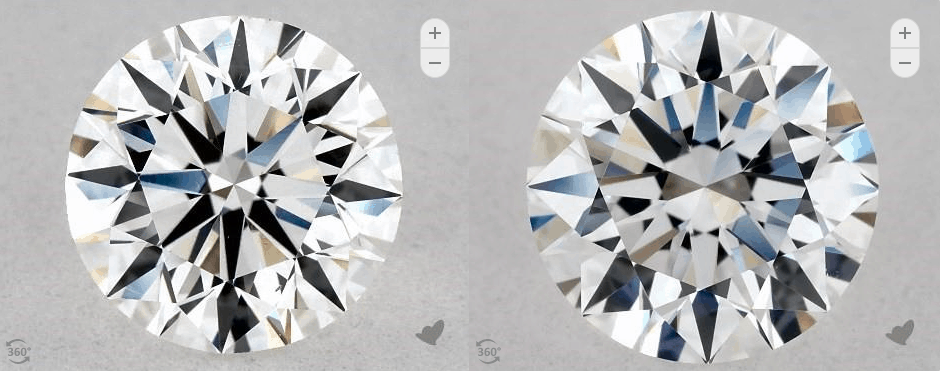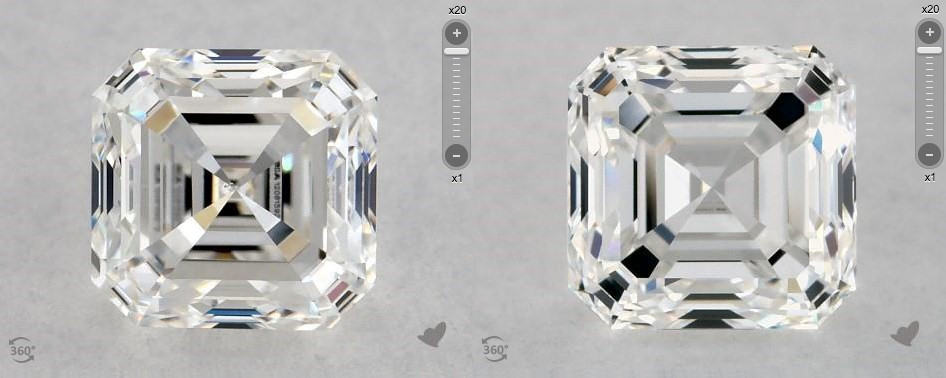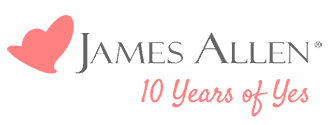G Color Grade Diamonds
Understand G color diamonds on the GIA color grade scale
Understand G color diamonds on the GIA color grade scale
G color diamonds are the start of the ‘near colorless’ grades on the diamond color scale. G color diamonds strike a balance between quality and value, presenting a near-colorless appearance that’s hard to distinguish from higher grades. They’re nestled just below the top-tier colors, offering a pristine look without the premium price of D, E, or F diamonds. For perspective, a 1-carat G color diamond might be priced around $5,500. Yet, venturing a bit further down the color scale, like to an I or J grade, could yield similar visual appeal for prices starting closer to $4,500.
Below, we’ve explained everything you need to know about G color diamonds, from exactly how they look compared to other diamonds to how much they cost, recommended shapes, when it’s worth buying one and more.
What are G color diamonds?
G color diamonds vs. other color grades
How expensive are G color diamonds?
When is a G color diamond the best choice?
FAQs
Why you should trust us
As we’ve covered in our guide to diamond color, all diamonds sold from reputable jewelers are sold with a certificate that lists their color grade.
GIA, the worlds leading diamond certification laboratory, grades as such: “A chemically pure and structurally perfect diamond has no hue, like a drop of pure water, and consequently, a higher value. GIA’s D-to-Z diamond color grading system measures the degree of colorlessness by comparing a stone under controlled lighting and precise viewing conditions to masterstones of established color value. “
E and F are also in the colorless part of the scale. G, on the other hand, is the highest grade in the near-colorless range, which also includes H, I and J.

In this case, “near-colorless” means that a G color diamond might display a very faint yellow tint when it’s viewed and graded by an expert gemologist.
Gemologists look at diamonds in a brightly lit laboratory setting. To get a clear view of any color issues of imperfections in a diamond, they’ll use specialized equipment such as jewelers loupes that allow them to view the diamond at 10x and 30x magnification.
This means that while a G color diamond might look slightly different to a D color diamond when it’s viewed under bright lighting and magnification, the difference in color is much harder to spot in a normal environment without bright lighting and special equipment.
In fact, in the right cut, a G color diamond can look virtually identical to a D color diamond when it’s viewed with the naked eye.
One of the most common worries people have when buying a diamond is whether a diamond with a color grade that’s below the colorless range (D, E, F) will look yellow in person.
Part of this concern is likely due to marketing. Diamond vendors and diamond jewelry brands, in an effort to push consumers towards more expensive diamonds, can exaggerate the importance of color.
The reality is that, to the naked eye, there isn’t much difference between a D color diamond and one with a G color grade. In fact, there’s surprisingly little difference between a D color diamond and one with an H color grade, at least in the right cut.
To help you avoid overpaying for color, take a look at the image below. This is the diamond on the left from James Allen and this is the diamond on the right. Which is which?
Did you get it right?

Can you see a major difference in color between these two diamonds? If you look carefully, you might be able to see that the G diamond is slightly yellower than the D color diamond. However, it’s a very slight difference, even with bright lighting and 20x magnification.
When it comes to price, the difference is much greater. The G color diamond is priced at $6,000, while the D color diamond is $840 more expensive at $6,840.
One of the reasons these two diamonds look similar is their cut. Because of its facet pattern and ability to reflect light, the round brilliant cut is great at concealing any hints of color in a diamond, even at lower color grades.
Still, even in a cut that displays color more obviously, the difference between a G color diamond and a D color diamond is quite small.
For example, below, we’ve compared a 0.90 carat, VS2 clarity, G color Asscher cut diamond from James Allen (on the left) to a similarly-sized, D color Asscher cut diamond (on the right):

Under bright lighting and 20x magnification, there’s a very slight yellow coloration to the G color diamond that isn’t there in the D color diamond. However, the difference is small — so small that your eye alone can’t tell the difference in a real-life setting.
Now, let’s compare the same G color Asscher cut diamond (on the left) to this F color Asscher cut diamond from James Allen of equivalent cut, clarity and carat weight (on the right):

Can you see any difference in color between these two diamonds? Even with studio lights and magnification, the difference in color is almost subtle, even though one diamond is considered “colorless” and the other only “near-colorless” using the GIA’s diamond color scale.
Both of these diamonds are 0.90 carat, with VS2 clarity and an excellent cut quality. The F color diamond costs $2,900, while the near-identical G color diamond is available for $2,400 — a full $500, or 17%, less.
As you can see from the examples above, G color diamonds are less expensive than D, E and F diamonds in the colorless range of the diamond color scale, all without much of a perceptible difference in appearance.
By choosing a G color diamond over a D color diamond, you’ll generally save anywhere from 10 to 25%, all for a feature you won’t ever notice with your naked eye.
With this said, G color diamonds aren’t always the best option if you want to get the best mix of appearance and value for money. For certain cuts and settings, it’s often actually better to drop down to a lower color grade that’s still in the near-colorless range.
We’ve explained this in more detail below, with examples for specific diamond cuts, metals and setting types.
In some situations, buying a G color diamond can be a good idea. However, there are also lots of situations in which you’d be better off, at least from a value for money perspective, by buying a diamond with a lower cut grade.
First, if you like engagement rings with halo diamonds, the G color grade is a safe bet (we recommend G/H for any hallo settings since they look virtually identical). Most of these settings use diamonds in the F to G range, meaning a G color center stone won’t look overly yellow or dark in comparison.
For example, this falling edge halo setting from James Allen has small diamonds on each side as well as around the center stone. The diamonds are in the F to G color range, meaning that a G color diamond will fit perfectly with this setting.
Second, if you’re searching for a diamond that’s as close to “perfect” in color as possible without the price tag of a D, E or F color diamond, stepping down to the G color grade could save you a modest amount of money.
First, if you’re aiming for optimal value for money, G color diamonds generally aren’t a great buy. Yes, they’re cheaper than D, E and F color diamonds. However, they’re significantly more costly than H color diamonds, all without much of a difference in appearance.
If you study a Rapaport diamond price list, you’ll notice that there’s a big step up in pricing from the H color grade to the G color grade. There’s no real reason for this — it’s just an odd quirk of the diamond industry.
This means that you’ll pay quite a lot more for a G color diamond than you would for an H color diamond of the same cut quality, clarity and carat weight, even though there’s virtually no visible difference in appearance.
Second, if you’re buying a round brilliant cut diamond. As we mentioned in our guide to diamond color, the round brilliant cut is excellent at concealing yellow coloration. If you choose any grade higher than H, you’re paying for a feature you simply won’t be able to see.
Third, if you want a yellow or rose gold setting. Because these metals have a strong gold color, any diamond that’s set in them will look slightly darker than its natural color. Because of this, it’s almost always better to choose a diamond with a lower color grade.
If you’re planning on buying a side stone or pavé setting, G color diamond will definitely look amazing. However, you can get an equally beautiful look by going with an I color.
On top of that, you’ll save quite a lot of money that you can later invest in your wedding, honeymoon or life in general.
In general, you should buy the lowest color grade that appears colorless in your setting of choice. In most cases, this will be H color or lower, even though G color diamonds can be considered higher quality diamonds.
It’s very rare for a G color diamond to have any yellow tint. They’re considered near-colorless, and to most observers, under normal conditions, they should appear totally clear and icy-white, like a diamond is supposed to.
It’s very difficult for an untrained observer to tell the difference between a G and H color diamond, particularly when mounted in a setting. It takes a trained observer, with specialized equipment, to pick out the difference between color grades for colorless or near-colorless diamonds.
Viewed with the naked eye, it’s virtually impossible to see any difference in color between a G color diamond and a diamond with a D, E or F color grade. Despite this, G color diamonds are anywhere from 10 to 25% cheaper than diamonds in the “colorless” range of the scale.
While G color diamonds look gorgeous and can be a good choice if you’re interested in a halo setting that features small diamonds in the G to H color range, they aren’t always the best choice.
For any shape, but primarily the round brilliant cut diamond, you’ll often get identical looks (at least to the naked eye) at a lower price by choosing an H color diamond (see our guide to diamond pricing for more information).
Need help choosing the right diamond for your fiancé-to-be’s engagement ring? Contact us and our diamond experts will help you choose the highest quality diamond for your personal tastes and budget.




Before you buy a diamond, get personal buying advice from industry veterans. We'll help you get the best diamond for the money.
DISCLAIMER: We don't use your email for marketing. Period.
A diamonds’ price is determined primarily by the 4 Cs of the diamond. On the wholesale level, diamond prices are first based on a diamond shape and
Buying an engagement ring is often one of the first major purchases in a person's life. The process can be fraught with tension as there are so m
A wide range of 1 carat diamonds exist both in online markets and local diamond jewelry stores. Not only are there significant differences in beauty
Please enter your email address to receive your 25% off coupon code:
Here is your coupon code: GFDSF3GF